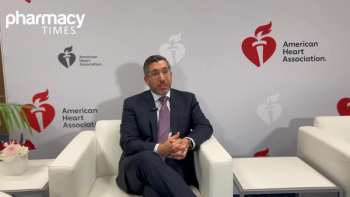
Pharmacists in Barbershops Can Help Lower BP, But Is It Worth the Cost?
A recent study raises the question of whether this unusual idea could be widely adopted.
The results of the recent study that barbershops help lower blood pressure (BP) in non-Latino African-American men sounds impressive: Go to a barbershop, and get your BP under control, easy peasy. Except, not really. I mean, the barbers were not managing the BP; it was pharmacists.
Yet, most of the news reports that I have seen about this study neglect to mention the role of pharmacists.
Let's first recap this study. This is a continuation of a previous study by some of the authors, with the lead author involved in investigating population-based interventions to address hypertension in non-Latino African-American men. The previous studies used barbershops to facilitate health outreach, where barbers checked BP in patrons and urged them to seek follow-up when needed. Although this sounded like a neat idea, the investigators found that in those previous studies, though they could identify poorly treated patients, when those patients went to get seen by clinicians they did not see treatment adjustments to their therapy.
I will pause here, because I do not know the success rates of pharmacists who do the exact same thing for patients who come into their pharmacies to test their BP. Yes, we do outreach and consult with patients when we see that their BP is high, even during repetitive visits.
Essentially, the investigators got a number of African-American-owned barbershops to recruit recurrent patients into several randomized cohorts. Those barbershops assigned to the control groups basically had patrons encouraged to make lifestyle modifications and go to a doctor's appointment based on the recommendation of a barber. But, the intervention arm had barbers promote follow up with pharmacists to help them manage their BP, who were conveniently in the barbershops and not at remote sites. Now, I am not talking about just a face-to-face talk about how to take their medication better or what to do about their diet or exercise. No, the investigators got the pharmacists trained in a specialized program and certified to provide hypertension management under collaborative practice agreements to prescribe therapy and do blood work to monitor blood plasma electrolyte and creatinine levels.
This is key, though it has garnered little attention. The intervention was multi-faceted, with barbers, who had strong networks in their communities and personal friendships with their clientele, paving the way to engage patrons to seek medical help. But, as the earlier research showed, that does not really help, and rather than wait for a potential change from patients' providers, they got pharmacists to step up. The pharmacists were directed to prescribe 2-drug therapy (ACEi/ARB) +/- CCB +/- Thiazide-type diuretic (in this case indapamide). They then were charged with monitoring the impact on electrolyte and renal function by using an i-Stat point-of-care device. The pharmacists then documented their interventions and sent them on to the providers with the collaborative practice agreements.
In total, the study had 139 patients in the intervention arm and 180 patients in the control arm across 52 Los Angeles barbershops. Demographics were similar across all arms, with the most significant difference being that the intervention group had a high rate of high cholesterol, according to the authors. Baseline BP at enrollment was 154.6 mm Hg in the control group and 152.8 mm Hg in the intervention group. The results found that at the end of the 6-month study, the intervention group had a drop of 27 mm Hg (125.8 mm Hg) and 9.3 mm Hg (145.4 mm Hg) in the control group, which is great. This study was conducted from February 2015 to July 2017, so, luckily for the authors, they were aiming for a systolic BP <130 based on JNC 8 that happens to be the same as the new guidelines from the American College of Cardiology. So, the results are still relevant overall. Regarding safety outcomes, just 3 cases of transient AKI were noted, which was attributed to the use of indapamide, and were subsequently resolved with discontinuation. Overall, patients were happy with the service provided by the pharmacists.
Some things stand out in this research. I hate the term "specialty-trained" pharmacist. I mean, BP is an ambulatory condition, that I truly think that most pharmacists can tackle. I am not really concerned about the understanding of the disease state or guidelines but rather more or less the training of the process of treatment from a clinical standpoint. Looking at education modalities, pharmacists are trained to understand a condition and how it is treated (HTN --> Pharmacotherapy), but the education lacks the training of how to provide oversight and continuation of care for a patient. It could be argued that residency solves this problem, but honestly, I do not think that pharmacists need a year's worth of training to address hypertension and other common ambulatory problems. Developing a clear collaborative practice and getting pharmacists trained to understand what to treat and not to treat I think is key, and saying that makes them "specialty-trained" seems to be a disservice that puts a lot of pharmacists out of reach of providing such patient services.
The other item that got my attention was the use of an i-Stat to get blood plasma electrolyte and creatinine levels. With 2 of the drug classes assigned (ACEi/ARB & Thiazide) affecting potassium and renal function, this seems like a no-brainer. But the fact remains that if pharmacists are empowered to provide these services, training in Clinical Laboratory Improvement Amendments-waivered devices is important. You could argue that the National Association of Chain Drug Stores' Point-of-Care Testing Certificate could solve this, but I think training in the pharmacy curriculum would be more pertinent if this stuff takes off.
Although I may come across as a little too happy about this study, and while I like the concept and the process, I am a bit cynical about several items. For one thing, I do not know how practical this is on a business aspect. Consider that participants were given $25 per pharmacist visit to offset the cost of drugs prescribed and cover travel, and that over the 6-month period of the study, each participant in the intervention group on average saw the pharmacist in person 7 times and had 4 follow-up phone calls.
That is a lot of time. For one thing, this was a subsidized intervention. I recognize that this was an efficacy study and not looking at the implementation of such a pharmacist involved service for its longevity, but I think many people may balk at the cost side of implementation. And that is where I really get cautious with these types of studies. If pharmacies start implementing these types of clinical services, the only way to make them work will be to add additional pharmacy hours, outside dispensing hours, for clinical services, and I hope that the metrics assigned do not turn hideous, as I think it would quickly lead to the lost efficacy of service. All these studies using pharmacists for such clinical services or outreach seems to include more than 30 minutes per encounter, and I would hope that if any company tried to implement these duties they would not try to minimize the time and also take into account documentation and follow-up which adds on time.
All in all, an interesting study, that I think is worth a read. It stands out for its creative way of approaching and meeting a vulnerable population through an interesting social aspect. The use of pharmacists to provide clinical services is nice, though I think it is far from demonstrating the applicability to rolling out such service beyond a public health service aspect. Now, the authors did mention that there is a continuation of this study going on, to probably monitor lasting clinical impact. After all, blood pressure was the only thing managed and analyzed in this study. We do not know if patients' BP would increase afterward or if this leads to any long-lasting benefit (eg, a decrease in risk for cardiac complications). But, at the end of the day, I am hopeful that this may lead to pharmacists being used more often in such clinical studies and given more attention on possibly expanding roles, because until we figure out the financial side of this service and how to make it work, I do not think we will see widespread adoption any time soon.
Reference
Victor RG, Lynch K, Li N, et al. A cluster-randomized trial of blood-pressure reduction in black barbershops. N Engl J Med. 2018;378(14):1291-1301.
doi: 10.1056/NEJMoa1717250.
Newsletter
Stay informed on drug updates, treatment guidelines, and pharmacy practice trends—subscribe to Pharmacy Times for weekly clinical insights.















































































































































































































